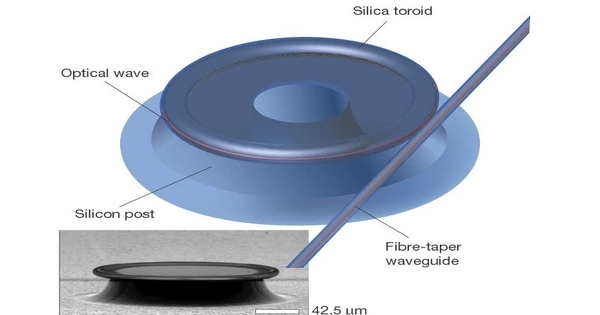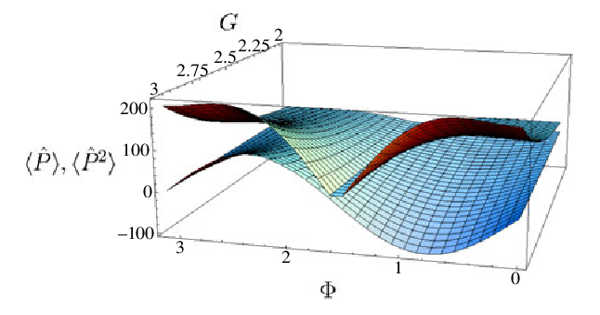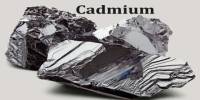A structure formed by reflecting faces on two sides of a spacer layer or optical medium, or by wrapping a waveguide in a circular fashion to form a ring, is known as an optical microcavity or microresonator. The first is a standing wave cavity, while the second is a traveling wave cavity. The name microcavity comes from the fact that it is often only a few micrometers thick, with the spacer layer being as thin as a nanometer. As with conventional lasers, this creates an optical cavity or optical resonator, allowing a standing wave or a traveling wave to form inside the spacer layer or around the ring.
Total internal reflection is the fundamental principle underlying an optical microcavity. When light strikes an interface between two materials, some of it reflects back into the original material, while the remainder refracts and continues to propagate. Most of the light can be reflected back into the cavity by creating a high-quality reflective surface, resulting in multiple reflections and the formation of standing waves.
Applications and effects
The fundamental difference between a conventional optical cavity and microcavities is the effects caused by the system’s small dimensions, but their operational principle is often the same as for larger optical resonators. The electromagnetic field of light can be observed to have quantum effects.
Such a microcavity, for example, alters the spontaneous emission rate and behavior of atoms, a phenomenon known as inhibited spontaneous emission. Consider the case where no photon is emitted because the environment is a box that is too small to contain it. As a result, the emission spectrum is significantly narrowed.
The confinement of light within a microcavity enables various optical phenomena and applications. Some of the notable features and applications of optical microcavities include:
- Resonant modes: Microcavities support resonant modes that depend on the cavity shape, size, and refractive index of the surrounding medium. These modes determine the wavelengths of light that can be resonantly enhanced within the cavity.
- High-Q factor: The quality factor (Q factor) measures the energy confinement and efficiency of a microcavity. Optical microcavities can achieve high-Q factors, meaning that light can circulate within the cavity for a long time before escaping. This property is crucial for enhancing light-matter interactions.
- Enhanced spectroscopy: Microcavities’ high Q factor enables sensitive detection and analysis of molecules or nanoparticles. Microcavities are useful for sensing applications because they can detect even small changes in refractive index or molecular binding events by coupling analytes to the cavity.
- Laser physics: In laser systems, microcavities can act as active elements. Light can be amplified and stimulated emission can occur by incorporating gain media (such as doped materials) into the cavity, resulting in laser emission at specific wavelengths.
















